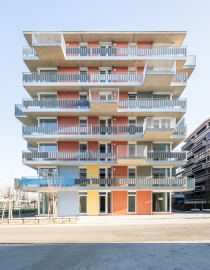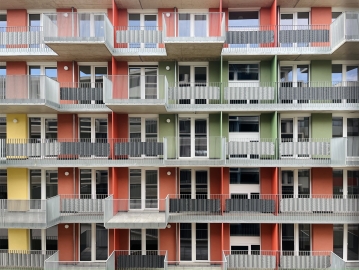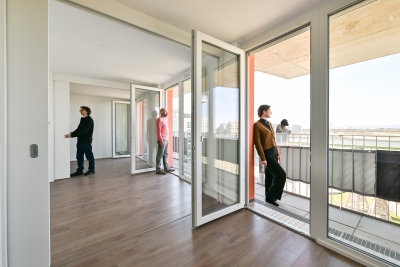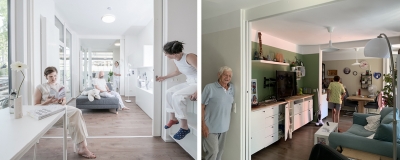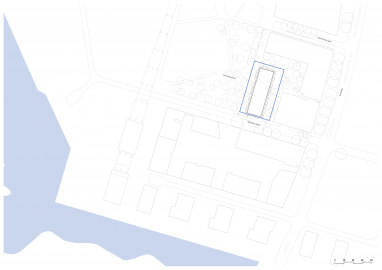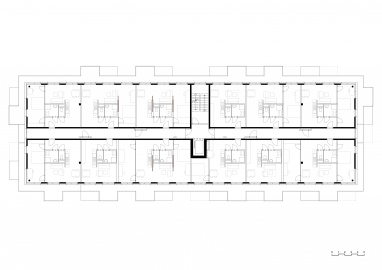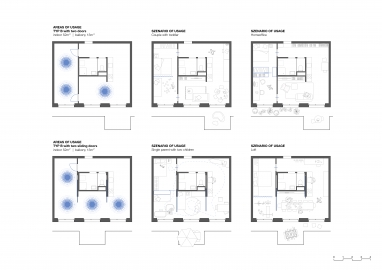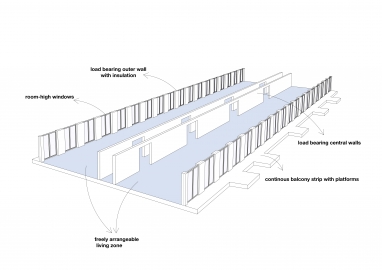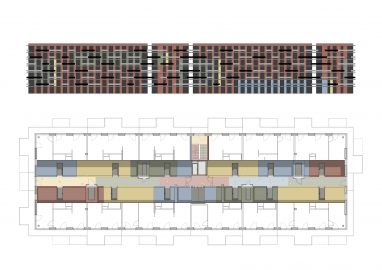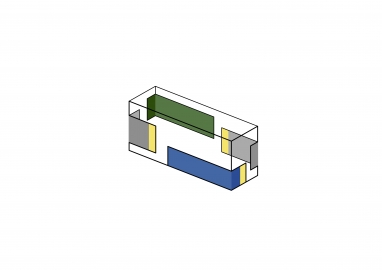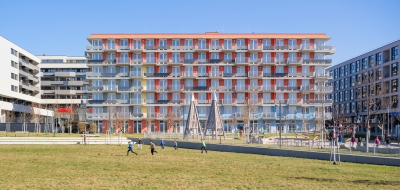Social Housing Aspern H4
Structuring the floorplan in Terms of usage areas instead of seperate rooms enables long-term useability.
At first glance, the house seems quite unspectacular. However, after closer inspection, it draws you in with clear, sustainable and innovative floor plans.
Within the economically tight cost framework of state-subsidized housing, reinforced concrete continues to play a central role as building material. When used with consideration, the material can contribute to social and economic sustainability. This is achieved by radically reducing the amount of the material to the bare technical necessities in form of an intelligent set-up, which makes the building flexible and adaptable for generations to come.
"I think this social housing project in Seestadt Aspern is the best example to showcase how we will live tomorrow!" Kathrin Gaál, Vienna City Councillor for Housing
Concrete is thus used in a sustainable and well-thought-out way. Maximum spatial flexibility is achieved with minimal usage of concrete: today, it incorporates cleverly drafted flats, which easily adapt to different life situations thanks to sliding walls; in fifty years' time, the house may be used as an open office. The few but sensibly placed load-bearing elements therefore allow for future adaptions, and the seemingly simple shell can easily accommodate changes in functionality, which promotes a long lifespan for the building.
The colour palette of the façade is inspired by historic and iconic Viennese council buildings: large colour fields divide the structured façade. This achieves a colourful and diverse appearance in relation to the modest available financial resources. This concept is also continued in the interior of the building.
The project reacts to the economic conditions of the market: plastic frame windows without cladding, galvanized railings, thermal insulation system - to name a few elements. The focus is thus not on the materials of the building, but on the quality of the flats: spacious balconies surrounding the entire facade, large floor-to-ceiling windows, sliding walls and open floorplans instead of fixed room divisions - the focus is not on the aesthetics, but on usability and practicality. Only then does the concept fully unfold. An open, yet pragmatic concept that does justice to a vivid, dynamic, diverse and modern society.

